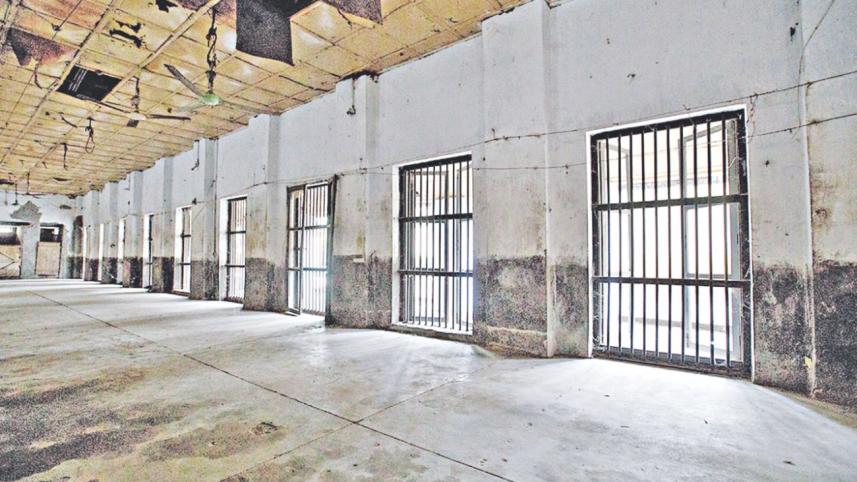In the Jail

The Central Jail in Bakshi Bazar, old Dhaka, started out as a criminal ward in 1788. Its 228 years are replete with history. The father of the nation Bangabandhu Sheikh Mujibur Rahman was held a political prisoner here. His prison cell is now a museum. Four leaders of our Independence movement- Syed Nazrul Islam, Tajuddin Ahmed, M. Mansoor Ali and A.H.M. Quamaruzzaman - were killed here in their cell. This has also become a museum.
Dhaka Jail's long life came to an end when its prisoners were officially shifted to a newly built prison in Keraniganj in July 2016. Since then, the seventeen-acre compound has been empty but closed. However, it was recently opened to the public for a few days on the occasion of a photographic exhibition.
Thus it was that on a crisp November morning I met Md. Jahangir Hussain at the prison's gate. Jahangir, a superb framer and owner of Jahangir Frame Ghor, has spent much time in the jail in the last few weeks setting up the exhibition. He was to be my guide.
The exhibition, called “Shongrami Jibongatha” (Revolutionary Lifestories) was organized by the Jail Authority and a voluntary organization, Journey. It featured historical photographs of our national leaders during the long movement that eventually led to independent Bangladesh. Finance Minister Mr. A.M.A. Muhith - who himself had been a political prisoner here for 42 days - inaugurated the exhibition.
Wandering in the sprawling jail grounds, I found a mix of history blended with traces left by today's prisoners. While the cells and walls of the jail must hold many secrets, I was not privy to them. Nevertheless I learned some interesting facts.
“Amdani Hall” (Import Hall) was where the prisoner spent the first night. The prisoner's name and particulars were duly noted down in a large prison book before they were transferred to the regular cells. But here is the interesting thing: Amdani Hall's walls are thirty inches thick. Since it is an old building, I assume very basic raw material was used for construction necessitating the thickness for strength.
In Bangladesh, foreigners are treated as special. The Dhaka jail was no exception, where a separate ward, called The Blue Nile, was designated for “Bideshi Prisoners.”
The grounds had beautifully manicured gardens and plants. A shiuli tree had, overnight, dropped hundreds of fragrant white-and-orange flowers in a wide circle around its trunk. In daylight the flowers looked fresh and beautiful. But I also tried to imagine life after dark in the jail. The prisoners would be locked into their cells while, outside, life went on normally. Surely that would be the most melancholic time.
One way that prisoners fought melancholy was by keeping pets. I learned from Jahangir that there were hundreds of cats in the occupied prison (which held 8000 prisoners.) A few remain today.
VIP prisoners were kept in special single cells in a separate two-story building, housing ten rooms with attached toilets. The grilled iron doors of the cells were shut using iron bolts secured by giant padlocks. Well, it is a prison after all.
Soon it was time to leave. I learned much from this historical place and felt humbled by the sacrifices made by others so we could have a free country. I bid goodbye to the jail with hopes of re-visiting someday (as a visitor of course!)
I hope the authorities open up the Dhaka Central Jail to the public as soon as feasible.
facebook.com/tangents.ikabir



 For all latest news, follow The Daily Star's Google News channel.
For all latest news, follow The Daily Star's Google News channel.
Comments